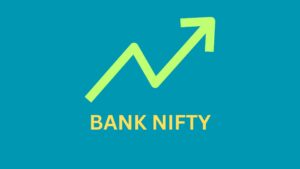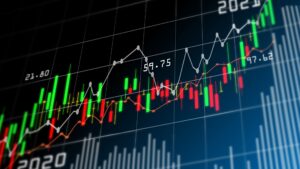Algo trading means using a computer program which has pre-decided set of instructions to place a trade order. The set of instructions are based on timing, price, quantity or maths model. As a computer program is used, algo trading tends to be very speedy and systematic. It is not governed by a trader’s emotions. In algo trading, orders can be placed at speeds and frequency which are impossible for a human trader.
Who uses Algo trading?
Institutional investors, large brokerage firms, investment banks, hedge funds, mutual funds, insurance companies use algo trading to reduce trading expenses. Globally, nearly 70% to 80% of trade volumes come from algo trading across financial markets. In India, algo trading has a 50% share in the financial market (including currency, commodity and stock market).

Examples of Algo trading
Let’s look at a few examples of algo trades. Suppose Maria wants to trade in shares of Joe Black Ltd and she has a trading plan which she wants to execute. A computer code can be written to implement her plan as follows: ‘Buy 50 shares of Joe Black Ltd when the price falls to Rs 900. For every 0.5% decrease in price below Rs 900, buy 500 shares of Joe Black Ltd. For every 10% increase in price above Rs 900 sell 50 shares.’
Another example could be on forex trading. Girish is a FX trader and he wants to execute a transaction for which he uses a computer program. The condition set is ‘Buy 50 lots of USD/GBP if price falls below 1.2543. For every 5 pip increase in the rate, sell 10 lots of USD/GBP.’
Moving average trading algorithms are hugely popular. We could have a computer program where the instruction could be ‘Buy John Doe Ltd. shares if the price is below the 20 days moving average and sell if the price increases above the 20 day moving average’.
Advantages of Algo trading
- It saves significant transaction costs for large broking firms, institutional investors, investment banks, mutual funds etc.
- It minimizes human error. Orders are placed instantly and executed swiftly and efficiently.
- Investment decisions are rule based and tend to be more disciplined. There is no sentiment and emotion involved.
- Significant price changes are avoided as trades are timed correctly and instantly. This is a huge benefit mainly in forex trading.
- Orders are executed at the best possible price.
Disadvantages of Algo trading
- Algo trading is completely dependent on technology. A slightest glitch in the system or error in the code can lead to extremely heavy losses.
- Building and maintaining an algo trading system is very expensive and requires a lot of capital.
- It is subject to various regulatory requirements and oversight which can be complex and time consuming to comply with.
- Algorithms are built based on historical data. Any unforeseen events can result in massive losses.
To conclude, algo trading provides a more systematic approach to trading rather than indulging in trading based on intuition. It requires coding skills and also knowledge of financial markets. Most of the algo trading today, is high frequency trading. In high frequency trading a large number of orders are placed at high speeds in multiple markets and across multiple parameters based on pre-decided instructions. It is best suited for large organizations, broking firms, investment banks etc.
Image credits: Image by rawpixel.com on Freepik



